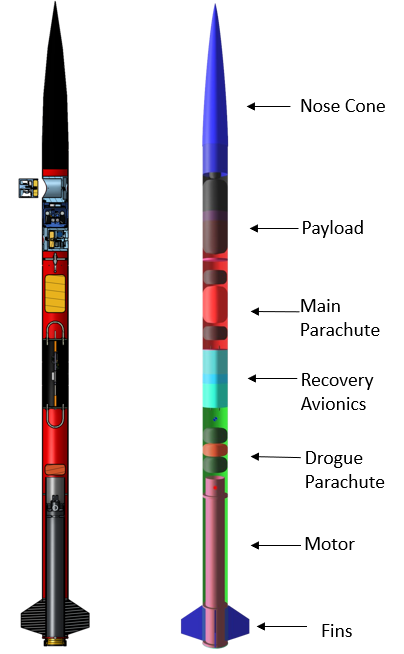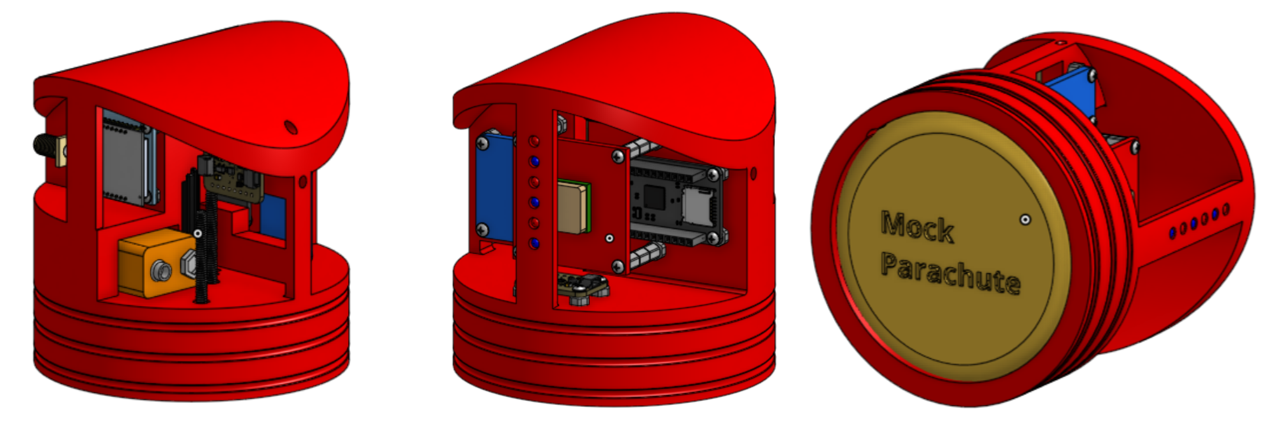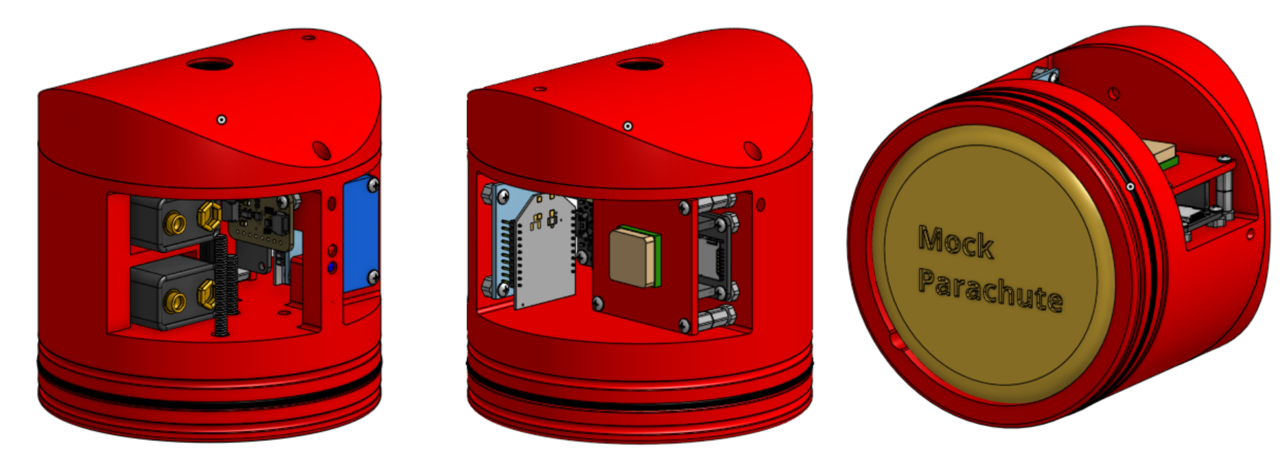2023-24 Rocket

All the members standing with the rocket after it was recovered and reassembled on April 20th, 2024.
(standing left to right) Matt Longer, Demetri Laikos, Grant Miller, Carson Billy, Arthur Tsai, Cam Clarke, Anders Setty, Riley Baker
(crouched left to right) Harrison Stoelting, Ethan McCowan, Evan Krentz, Alex Hulteen, Seth Plantz, Kyle Brown
On April 20th, 2024 the first ever launch of a BSC rocket took place at the NAR Federal Road High-Powered Field in Cedarville Ohio. At the time it was the University of Cincinnati's most powerful rocket launched, using an Aerotech M2500 and achieved the school's record for highest achieved altitude of 7,184 feet. The rocket successfully deployed the capsule that was inside the payload section and it was successfully recovered as well as the rocket itself. Launch videos and more detailed information on the rocket and payload system are below.
Rocket Structures

The rocket structure was completely designed from scratch and utilized 5.525 inch diameter G-10 fiberglass tubes for the airframe. The completely assembled rocket stood 136 inches (11 feet 4 inches), with a dry mass of 40 pounds and a loaded mass of 59 pounds (payload + motor). The rocket was powered by a commercial Aerotech M2500 solid rocket motor. The recovery system employed a 3 foot diameter drogue parachute, a 9 foot diameter main parachute and 2 commercial altimeters with a commercial GPS tracking system for the recovery avionics.
Payload


The payload system has three major parts, the ejection bays and the two ejection capsules. This payload was the first of it's kind at UC, being the first rocket payload to be fully 3D printed. The bays and capsules were printed out of ASA thermoplastic filament on a Bambu Labs 3D printer. The two capsules were ejected out of the rocket's sides at apogee, each capsule 180 degrees apart from one another, through cut out holes in the rocket's structure.
Capsules were ejected from the bays using compressed nitrogen. The nitrogen was stored in a compressed air tank that was secured to the top of the payload assembly and resided in the rocket's nose cone. Nitrogen was released by solenoids to the individual bays which enabled the ejection of the capsules.
The first capsule was the atmospheric capsule and it had a suite of sensors that collected atmospheric data. Some data proposed to be collected was temperature, pressure, humidity, and volitile organic compounds. Due to electronic failures the night before the launch, that payload and avionics team members were unable to resolve, the capsule was not working so it was launched but not ejected from the rocket.
The second capsule was a camera capsule that housed a small FPV camera that would record the rocket's ascent and the capsule's descent. The camera's battery became disconnected while the rocket was placed onto the launch rail, so no onboard launch footage was captured.
Both capsules were equipped with GPS modules, altimeters, and small parachutes to control the capsule's descent speed. GPS location and capsule altitude was transmitted via radio to the rocket ground station, allowing the team to track the capsules and rocket in real time. It also enabled the team an easier way to find the capsule after touchdown.